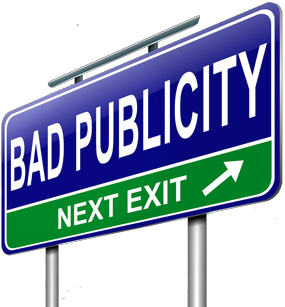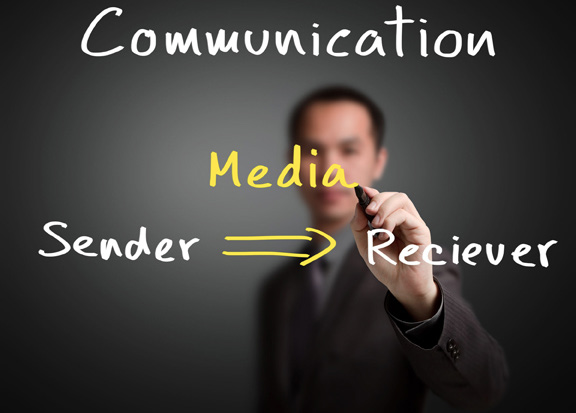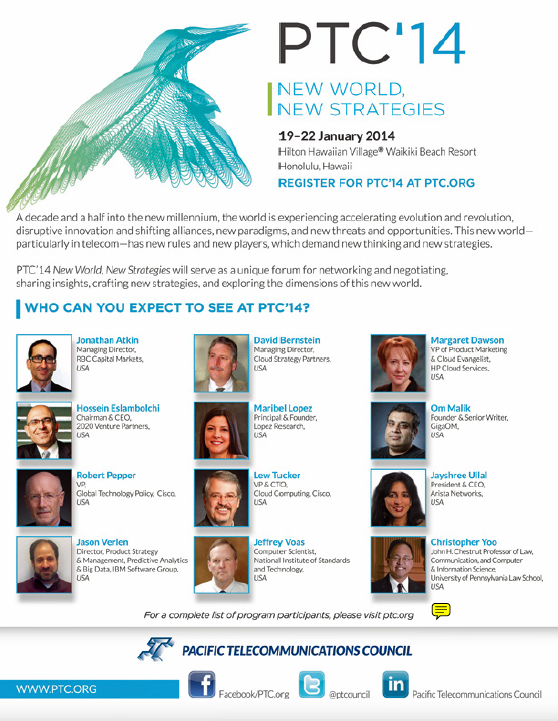The unofficial start to the satellite industry’s business year within the U.S. is fast approaching with SatCon 2013 (IBC globally). With that in mind, now is the time to start thinking about engaging a focused public relations campaign. Such a decision can come with questions, false beliefs, and possible misunderstandings. What I am attempting with this article is to provide an honest and blunt assessment to what PR is, is not, and how it specifically benefits the satellite market.

I have had the good fortune of working with several satellite technology companies on their public relations initiatives, including the launch of a few companies within the North American market. I say fortunate because, on average, the press who cover satellite issues are genuinely interested and committed to the topics they publish. This passion for the satellite industry opens many doors of opportunity for public relations (PR) and marketing (marcom) firms with editorial teams—it also means when you approach the satellite media for coverage, you truly need to have a story idea with substance beyond a simple product announcement.
The big question is... why put resources into public relations and is such worth the effort?
Statistically speaking, chances are you don’t really know what PR is. Don’t worry, few do. My parents, my wife, and when they are old enough, my children, really will not know what it is. No matter how often I explain the basics of PR, retention of that knowledge is surprisingly short. This is a PR industry-wide issue and leads to potential client doubt as to the value of investing resources into a PR person at all. I should emphasize that my parents, wife, and children are all intelligent people. Now that I have ensured I am not sleeping on the couch and have a place to eat Thanksgiving dinner, let’s continue.
The problem is that, as an industry, PR professionals are so busy working on client reputation management that we do a terrible job on our own image. The result is many different explanations and interpretations of what we do.
The definition that is of the most value to anyone considering PR is: Public Relations works to increase a client’s visibility within their target markets, most often through unpaid media placements, analyst briefings, and, where applicable, social media interaction. The goal of PR is to increase brand recognition, which, in turn, builds familiarity and trust. This work results in more engaged potential clients during sales interactions.
The Myth Of Instant ROI
The number one question I get asked by potential clients when I speak with them regarding PR is; “What is the return on investment (ROI) for a press hit?” This is a reasonable question. You budget a good amount of money each month specifically to ensure your company’s name is included in important satellite industry articles. You want to make certain that you are doing this for a reason. After all, when you invest in a six month advertising campaign, you expect specific returns in new or renewed business. Consistent (read: repetitive) placement of your logo, your tagline, and an attractive image of your service helps to drive clients to your company. This is a generally proven method of obtaining attention, albeit an expensive one. What, you then ask, is the dollar value of such a hit?
This is where a lot of PR agencies wander into the land of science fiction. I say this because they apply the same calculations to a press hit as an advertising firm applies to an advertisement. There is just one problem with this approach—PR is not advertising.

The truth is, it is almost impossible to assign a short term monetary value to a press hit, especially for the satellite industry. While I have never worked in satellite sales, I am confident to say that, never in the history of the industry, has anyone bought a new dish or an antennae on a whim. Customers have never decided to upgrade from DVB-S to DVB-S2 just for the hell of it. No one woke up one morning and said, “Let’s go hybrid because I had a dream about how cool it is.”
Satellite technologies are not at all similar to the candy bars that populate the checkout lane at the supermarket. If a potential customer reads about you in an article, even if the article is important and presents a high profile, chances are such will not drive the reader to suddenly call your company to make a purchase. Any of those issues I listed above require time and consideration from the client. The decision to transition into the DVB-S technology transition decision can actually take several months.
There is definitely ROI in PR, but such is not calculable in instantaneous monetary conversions. If you are ever given numbers along these lines, even if based on logical sounding arguments, know that the figures are about as real as a the possibility of a unicorn’s horn increasing bandwidth.
What is the value of PR, if not in direct dollar signs? The value of PR is in the long run, in the careful and calculated increase of a company’s awareness within the industry and, most importantly, the brand’s impression on the minds of your potential clients. Articles, regardless of length or importance, provide an understanding of your company as more than the technology or services you offer—editorial features establish you as a committed and trusted player in the industry and further your business success. This is what is called “thought leadership building.”
What Is Thought Leadership?
Studies have found that it is not until an individual comes across a company’s reference at least three times, within a relatively short period of time, that they start to recognize the name of that company. For example, Dexy’s Midnight Runners, the band behind the popular 80’s hit “Come On Eileen,” have found that it takes more than one popular song to be remembered beyond that moment of success. Not recalling the exact name of the group that I wanted to use in this article, I engaged in a search engine probe of the name “Dexter’s,” which I thought was the true name, and immediately learned of my error. As I hadn’t been exposed to the group’s name recently, nor had successive encounters with the name, the true name had been forgotten. Not good for Dexy.
If you combine these two concepts (reference and encounters), the result is why thought leadership and PR are so important. In order to be remembered, you need to be in front of your potential clients’ eyes regularly and consistently. Just because you had a lot of coverage last year, does not mean you will be remembered next year.
This is really where the value of PR comes into play. A successful PR campaign is one that builds that presence as an ongoing constant. The campaign initially builds that important visibility, through the media, through analysts, through social media, and then ensures you are always part of the conversation, in a media channel that is being accessed by your firm’s potential clients.

Being part of the conversation is more than simply putting out a press release on a new product or upgrade and hoping for a hit or two in industry publications or social media. The exposure must go beyond what is being sold. Readers/viewers must start to recognize who you are and why you should be considered for the product being presented. A company’s executives must be brought into play to weigh in on the issues facing the industry—in this manner they become recognized as subject-matter experts and start to become “spokespersons” for a particular technology or market segment.
Is it better to invest in compression or modulation? What is the best way to accommodate for 4K… 8K? Will space run out of space for video satellites? By involving your executives, and by extension your company into these conversations, it shows a knowledgeable investment into the future of satellite beyond the product line. These are the same issues your clients are contemplating. Having a company on board that shares the concerns and options of such issues builds trust in that company and the people who run the firm.
PR Case In Point
Here is a classic example—I had the opportunity to launch a satellite modulation technology within the North American market. When introducing any new company into a market, there are always the challenges of convincing the media, and by proxy, potential clients, into feeling comfortable enough to embrace that company as reliable.
This gets even more complicated when the company is a foreign entity, and even more difficult when no one believes the technology is real.
Had this company entered the market with no PR outreach at all, the client company would have had to counter these challenges. They were actually at the point where potential clients were laughing at them during prospect meetings, once they heard the claims of this DVB-S2 competitor. When the concept alone induces laughter, how can success be gained when no one believes a company’s claims? This was my first challenge with this company’s launch into the U.S.
With any outreach, be it PR, sales, or marketing, claims straight from the horse’s mouth are hard to swallow. The “believe me because I say so” approach is seldom a good one… unless you are a cult leader or have the impact of the late Steve Jobs. Imagine the response the company claims were a 72 percent bandwidth increase over DVB-S2, before such was possible to attain. Luckily for our PR efforts, those claims were true. However, without a third party backing the claim, the laughter would have continued.
Our PR team ID’d and obtained third party endorsements, starting with industry analysts. By arranging briefings with them, we were able to accomplish several necessary elements for the campaign.
We obtained direct and unedited feedback of what the analysts thought of the claims and concepts of the presented technology. We also received insight into how the greater industry would best receive such claims. Most importantly, we received support from the analysts that these claims were more than hyperbole.
With these facts in hand, we went to the media and formally presented the technology. It was no longer a PR company saying, “This is some amazing technology.” We now had the support of reputable analysts. This, in a nut shell, squashed any media doubt of the company’s claims and allowed a market to be built. This presence included the usual new product, upgrade and corporate growth announcements, but primarily focused on the “bigger picture” industry stories.
Most U.S. broadcasters operate using DVB-S. The markets were originally slow to convert to this proven technology and the conversation became... why is it now time to upgrade when DVB-S works for our company? This is where we really thrived—in obtaining coverage for the technology change.
The Turn Around Begins
Within a few months, if there was an article about modulation upgrades, we were included in the conversation. If there was a conversation about the Ka-band, we were part of the conversation. If there was a conversation about compression, we were part of the conversation. We were able to build market awareness and belief in the technology to the point where the press was reaching out to us for comment and insight on these issues. Remember the subject-matter expertise mentioned previously? It works.
On the business front, the first noticeable effect was that the laughter at new business meetings stopped completely. At trade shows, there was greater booth attendance, and, most noticeably, those who stopped by already knew who the company was and what they were able to accomplish. It was no longer a question of “What do you guys do?” It was “l need to see this in action!” For those of you who have guessed the company I am highlighting in this story, you may also be aware that despite all of the PR progress, they have now fallen on tough times.
This really underlines my earlier point that satellites and satellite technologies are not a Snickers bar. PR works in tandem with marketing and sales. We help with visibility, with industry-wide concept understanding, and with overall brand building. However, that alone is not going to finalize the sale.
How a company implements the benefits of PR campaigns is up to them. We were able to convert mistrust and doubt into industry acceptance. We turned zero industry and vertical market coverage into a constant and meaningful press presence, which directly resulted in turning new business meetings full of doubt and laughter into earnest opportunities. This is the real ROI of PR.
How Does This Apply To Me?
Now, you may be thinking, I am not a foreign company looking to break into the U.S. I am not involved in a technology that no one believes is real. I have successfully existed for decades without PR, why do I need it now?
While some, or all,of this may be true, the underlying principles of that story are just as impactful for a 50-year-old company with no PR history and who makes industry standard satellite dishes. I would argue that if you have not engaged in PR of any sort at this point in your company’s history, the days of equal success without it are rapidly dwindling—more on that later.
If your current approach and analysis of PR success is based on that immediate monetary ROI, then chances are you have already gone through at least two PR firms. The change of PR agencies also probably coincided with the fiscal success of the company for the quarter. You may have even found that after engaging the second or third firm, profits grew, and that change of guard was part of the reason for success.
However, if you take into consideration that claims of immediate fiscal ROI are completely false, it is just as easy to say that the “success” you are seeing from the new firm is actually the result of the previous firm’s campaign working its magic. Or, that the success has nothing to do at all with any of the hired PR firms—you just happen to have had a great sales quarter that was independent of any PR outreach. There really is no way to tell. I wish there was. It would be great to say (as many firms do) “I guarantee that my work will breed one million in sales over the next quarter.”There are just too many variables in play to make such absurd promises.
The Long Play
The real value in PR is the long play, the gradual and consistent build of industry awareness, recognition, and trust. It is most often slow, gradual, and makes the work of the sales and marketing teams easier when interacting with clients. This is why basing PR success solely on profits, and changing firms as a result, is so incredibly detrimental to the long term PR impact of the company, regardless of the firm hired.
A key to PR success is consistency; consistency in messaging and approach. Each time one PR firm is replaced for by another, it is like hitting the reset button. Your boilerplate and one liner may be the same, but how your company is presented to the press, the angles of outreach, even the tone of the pitches themselves, all change. That change can be felt by your target customers. Every time a PR change is made, such requires a few steps back to rebuild the brand, company image, and to reposition the executives as experts.
This is not to say that there are never reasons why you should fire a PR firm—there are many conditions that could find a PR firm being released. If an agency’s efforts fail to ensure the client firm is involved with those industry conversations played out in the media, if they fail to understand the company messaging, and produce subpar work, then they should be removed. In cases were industry recognition is not being achieved, removal is worth the time required for a reset in such cases. Retaining an ineffective firm can do more harm than good for your company. Just be certain the PR team is being judged on the correct criteria.
Ignoring PR Means Ignoring Yourself
Why is engaging PR for established companies more crucial now than ever before? The simple answer is technology. At this point, talking about the speed of communication is almost cliché, but non-the-less true. Fifteen- to 20-years ago, it was completely plausible to forgo any sort of PR outreach as it was faster to direct mail new product information than write up a press release for a print publication and then wait for the story to run.
This is no longer true. All it takes to get widespread coverage is an email, a phone call, and a story uploaded to the web that can go viral. Most print publications have a digital version—journalists are posting stories by the minute, not weekly, and reader feedback is instantaneous.
Let’s say, for instance, you have developed a mobile uplink unit that is 15 percent lighter and allows camera operators to access more remote areas. At the same time, a competitor has simultaneously released a unit which is only 8 percent lighter. Where the competitor has conducted a PR campaign reaching out to industry and vertical publications, social media, blogs, and online forums, your firm decides to stick with a direct mail campaign and an aggressive sales pitch.
By the time your salespeople get through to the local news station, the potential buyer has already read about your competitor several times in the variety of media. This makes converting your sale that much more difficult. The goal should always be to drive the customer to reach out to you. By neglecting PR, what you are really doing is removing yourself from any digital relevance and also suffering from no presence in any of the traditional industry media. How will anyone know who you are?
I had spoken once to a satellite dish developer who consciously avoided PR outreach because they had experiences in the past where competitors stole their technology, re-branded it, and then sold it at a lower price. Their solution to this was halting all PR outreach. Chances are this move did not accomplish two things.
It probably did not stop continued sales by the competition
It probably did not negate any beliefs that this competitor was an industry leader for the target technology segment
What avoidance of PR accomplished was to instantly move the dish developer completely out of the conversation regarding future dish technologies. It also greatly limited the number of customers who were aware of anything the dish firm was doing... aside from past customers and whomsoever was on their new outreach database. The question any company with this lack of outreach plan can expect in a sales call is, “If you guys are so great, why am I reading about everyone else?”
The fear of having material stolen is certainly understandable—but such is not the result of a PR campaign. There is a simple rule to avoid this—the Rule of Duh. If there is something you don’t want people to know about, don’t promote it. Assume every word you release to the public is... well, public. If you keep this in mind for all PR outreach, then it is difficult for a PR campaign to undermine a company in the ways this particular dish developer was concerned about.
The Jist
There is a huge potential for finding long term success for any company within the satellite industry through a focused PR campaign. With PR, you can create a lasting and positive impression of your company and those who run it, not only with your peers, but your important target customers and the greater business community.
Public relations is a long play tactic that realizes positive results through consistent outreach. For the most part, there is no instant monetary ROI for PR within a sector as complex as the satellite industry. With this in mind, you need to take PR firms’ claims of ROI around a specific cash amount with a huge grain of salt. As the technology behind communication becomes faster and more concise, having a presence in this world becomes all the more crucial—engaging a person, or firm who understands today’s media environment is a critical component of a company’s success.
Whatever your plan for visibility is for this coming year—be it the acquisition of an outside PR firm, hiring an internal PR person, or even employing a freelancer to work with you on some of your more important announcements, I hope you do engage in Public Relations. In one form or another, PR will help you build and grow your image within the minds of all of your potential customers or clients. I wish you all a very successful SatCon (and IBC).

About the author
Josh has been working in PR for nearly a decade and has represented everything from politicians to satellite technologies. For the past 5 years, his focus has been primarily on high tech B2B markets, working directly with the many facets of the broadcasting industry and beyond. Josh is committed to lifting the veil over the PR industry to help companies make well informed decisions with realistic expectations as they seek market visibility.
About Glass Lantern
Glass Lantern PR illuminates and communicates your messages using the hallmarks of creativity, ingenuity, determination and dedication. While communication methods have changed, trust and transparency are still the bedrock of lasting relationships and serve as the cornerstone of our partnership with you.
Glass Lantern PR is operated by Joshua Kail and William Madaras. With more than 40 years of public relations experience between them and the application of their Results Assurance approach, they have built client successes across a number of industries. The firm’s specific focus includes high tech B2B and B2C companies in the sectors of SATCOM and satellites, consumer electronics, software, cable, cyber-security, medical, gaming, social media, photography and more.
For further information, please view:
Website: http://www.GlassLanternPR.com
Facebook: https://www.facebook.com/GlassLaternPR


